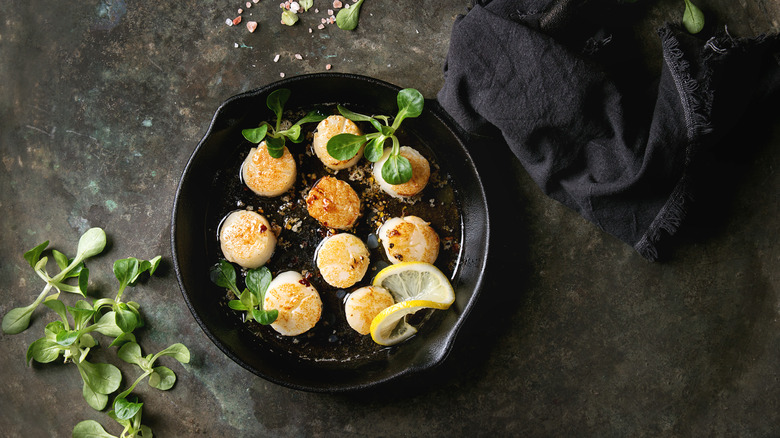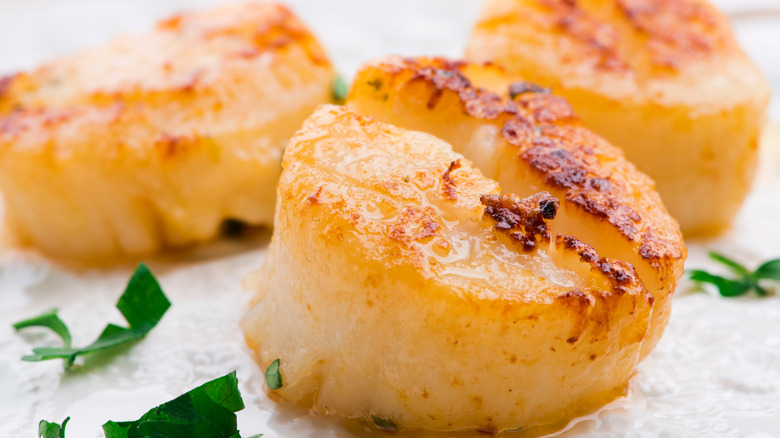Don't Be Fooled By Fake Scallops
Scallops are saltwater shellfish with a delicate flavor and tender bite. Bay scallops found in shallow water are smaller and tend to be priced less than their larger, harder-to-catch cousins, the sea scallop, which live on the ocean floor. Both kinds are usually harvested wild (via Savory Experiments).
While scallops aren't the most expensive seafood item (according to Seafood University, that honor goes to blue fin tuna), they are still pretty pricey (via Marketplace). Price of Meat explains that the bivalves' higher price tag is related to a few factors. Since they need a lot of space and can take years to reproduce, they are tough to efficiently farm. Because of this, most scallops are wild caught, making the cost higher. Because their shells don't close all the way, scallops spoil quickly and must be shucked immediately after catching (via Lobster Anywhere). This additional labor, plus the transportation costs to get the shellfish quickly to inland regions, also increases the price.
The high cost of scallops makes them a prime candidate for seafood fraud. Oceana claims that more expensive fish are misrepresented by other, cheaper varieties anywhere from 25–70% of the time.
How to tell if your scallops are fake
CaliDiet points out that it's unlikely high end restaurants are passing counterfeit scallops off as the real deal to unsuspecting customers. More than likely, restaurants committing scallop fraud are substituting one type of scallop (bay, for example) in place of another (ocean). However, other less reputable restaurants or supermarkets may try to pass off fraudulent shellfish as the real deal.
The Rusty Spoon explains that fake scallops can be made from another type of fish (like skate or shark) cut and flavored to taste like the bivalve. Or, they can be made from surimi, which Healthline describes as a seafood paste made from mashed pollack that's also used to make imitation crab meat.
The Spruce Eats describes fake scallops as appearing uniformly cylindrical, as if they were stamped or punched out with a cookie cutter. Density is also a factor. Horizontal fibers run through real scallops, according to The Rusty Spoon, and a real scallop's thickness, unlike their size and appearance, is not uniform.
Fake scallops not only drain your wallet but they can also pose a serious health risk. Some seafood allergies are fish-specific so a false accounting of what the seafood actually is can trigger an unexpected and potentially dangerous reaction (via KidsHealth). Plus, The Rusty Spoon notes, the fish used to make the fake stuff is often harvested unsustainably.

